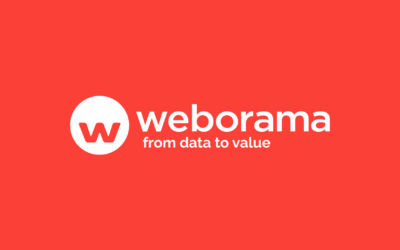In a world where technology shapes our content consumption habits, the explosive rise of streaming has transformed our relationship with television. Video-on-demand platforms have taken over our screens, offering a myriad of options for viewers hungry for diversity. But behind this entertainment revolution lies an equally radical shift in the advertising landscape.
The strong emergence of streaming has profoundly reshaped how advertisers interact with their audience. Now, viewing on Connected TV (CTV) is commonplace, disrupting traditional TV advertising patterns. The rise of Advertising-based Video on Demand (AVOD) services has also opened new doors for brands seeking to reach targeted audiences.
Simultaneously, programmatic streaming has emerged, offering a powerful and efficient method to deliver targeted and measurable advertisements on these new channels. This revolutionary technology allows advertisers to broadcast their messages more precisely, adapting to viewers’ preferences and behaviors.
I. What this means for media agencies
The rise of streaming has opened new horizons for advertisers while also presenting new challenges for media agencies, demanding strategic thinking and radical adaptations in their advertising approach.
Challenges and Opportunities:
New inventories and direct channel media planning: The first challenge is the new inventories offered by streaming platforms. These channels, which did not exist until recently, require a reorganization of media plans. It’s about finding the right place for these new channels without creating duplicates and reaching audiences different from those already reached with linear television. This evolution represents a great opportunity to generate new touchpoints with social categories increasingly present on platforms like Netflix, Disney Plus, or with traditional players like TF1+ and M6+ who recently entered this market.
The data challenge:
Another major challenge lies in accessing and using data. Currently, the data available on platforms like Netflix does not have a sufficiently precise level of granularity. It is difficult to specifically target a show or series, with choices often limited to general categories like action movies or series. Moreover, socio-demographic information is also limited.
To adapt to these new tools and channels, it is imperative to address this challenge of “unknown data.” Agencies must propose solutions to effectively exploit this data, especially with the arrival of Amazon Prime, which provides a wealth of information from the Amazon ecosystem.
Creativity and measurement:
The third challenge concerns advertising creativity. Campaigns designed for linear television do not work the same way on streaming platforms such as Netflix or Amazon Prime. Consumption habits and advertising expectations differ considerably. It is essential to create specific and adapted content for each type of channel, in addition to considering multi-screen and different formats.
Lastly, the issue of measurement remains essential. While many metrics are available for digital, measurement on SVOD and AVOD platforms remains limited. Agencies must find ways to evaluate the actual impact of campaigns on these platforms, beyond simple video completion rates.
Responses and Solutions:
Faced with these challenges, media agencies must innovate and adapt quickly. Several approaches are possible to address these challenges:
- Interactive formats: Specific formats have been created for CTV and VOD, integrating QR codes to encourage interaction. These formats offer viewers the opportunity to access special offers, samples, or complementary content, bridging the gap between traditional and digital media.
- Geographical data and targeting: Agencies are working on providing location-based data, allowing the identification of areas where specific audience segments are located and offering better targeting precision beyond age or gender.
- Access to platforms: By working directly with platforms like Netflix and soon Amazon Prime, agencies can access advertising tools and activation data. This opens up new possibilities to offer more relevant and effective campaigns on these rapidly growing platforms.
The challenges posed by the evolving media landscape towards streaming are numerous, but they also offer opportunities to rethink how brands interact with their audience. By adopting an innovative and strategic approach, media agencies can successfully navigate this new advertising era.
II. Audio as a complement to Segmented TV: A powerful duo
In the era of streaming and segmented television, audio becomes an essential complementary offer with unique opportunities to reach diverse audiences in a differentiated way. Between audio and television channels, the audiences are distinct, as are the uses and attention paid to the media.
- Different audiences, distinct uses Audio,
Whether podcasts or webradios, gathers audiences that are closer to the relationship we have with radio. The big difference lies in the flexibility of digital audio: on-demand, listened to when and where desired, often during travel. This contrasts sharply with television, often watched at home in a state of passivity. This difference in attention paid to audio and television content leads to different memorization and perception.
- Capturing attention
Where television focuses on visuals, situations, and striking images, audio mainly focuses on voices and the attractiveness of very short messages. It is necessary to capture attention immediately, giving the brand, context, and advantages in a concise and effective way. Audio thus offers a format where narration and verbal content are key, requiring a creative approach to generate interest.
- Data and Key Figures
Audio has experienced significant growth, whether in terms of content, user listening, or advertiser interest. Here are some supporting figures to illustrate this growth:
17 million listens in podcast format.
37% of consumption happens outside the home.
42% occurs before noon.
48% of consumption is digital, a significant share.
Strategic complementarity The complementarity between audio and segmented TV lies in the fact that they capture attention at different times of the day. This opens the way to a relevant extension of advertising messages, allowing continuous exposure throughout the day. Audio ads can thus be followed by TV ads in the evening, creating a progressive and reinforced memorization.
Thus, audio and segmented TV prove to be powerful allies for advertisers. Not only do they reach complementary audiences, but they also respond to different uses for the same targets. This duality allows for diversification of advertising strategies and effective association to achieve marketing objectives. In short, in the constantly evolving media landscape, audio stands out as a crucial player, offering promising advertising potential and targeting opportunities closely aligned with the listening habits of modern consumers.
III. Accessibility in programmatic
When approaching the subject of Connected TV (CTV) and digital audio from a programmatic standpoint, the access possibilities are relatively similar, but they also present their own unique challenges. It often involves negotiating with publishers and broadcasters to obtain the necessary inventories, which can vary in terms of availability and control.
Inventory control and user experience When inventories are more limited, as is often the case with Subscription Video on Demand (SVOD) services such as Netflix, publishers and broadcasters exert strict control. Platforms like Netflix and soon Amazon Prime (beginning of April in France) keep control over their inventories, ensuring the quality of advertisers and the overall user experience. For example, Netflix systematically validates all advertisers wishing to advertise on their inventories. This approach guarantees a close relationship between VOD and the platform, ensuring that advertisements match the platform’s image and values.
Rigorous advertiser validation Broadcasters like Netflix and Amazon Prime are very selective about advertisers they allow to advertise on their platforms. They have strict blacklists for certain types of advertisers, much more stringent than those of traditional television. This rigor comes from their concern to preserve their image and to respect the trust relationship with their users. They ensure that the advertisements broadcast correspond to the user experience and contribute to maintaining the perceived quality of their services.
First steps for Amazon Prime in France Regarding Amazon Prime, which is making its debut in France in early April, it is likely that they will adopt a similar approach to Netflix in terms of advertiser validation and inventory control. Their priority will undoubtedly be to guarantee a quality user experience and to maintain a strong brand image.
In summary, programmatic accessibility for CTV and digital audio is framed by close control by publishers and streaming platforms. This approach aims to ensure a quality advertising experience for users while preserving the integrity of the platform’s brand image. Advertisers looking to advertise on these channels should therefore expect a rigorous validation process and close collaboration with publishers to ensure effective and relevant broadcast of their advertisements.



